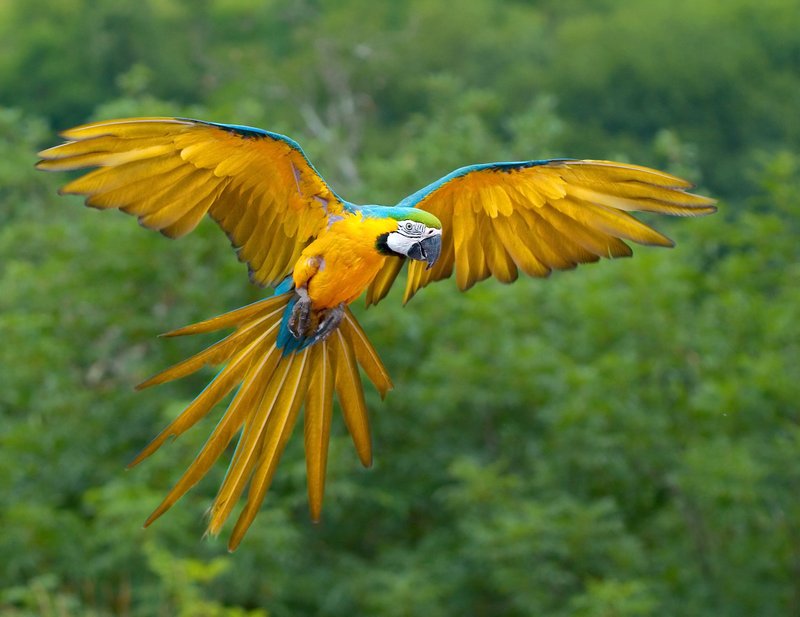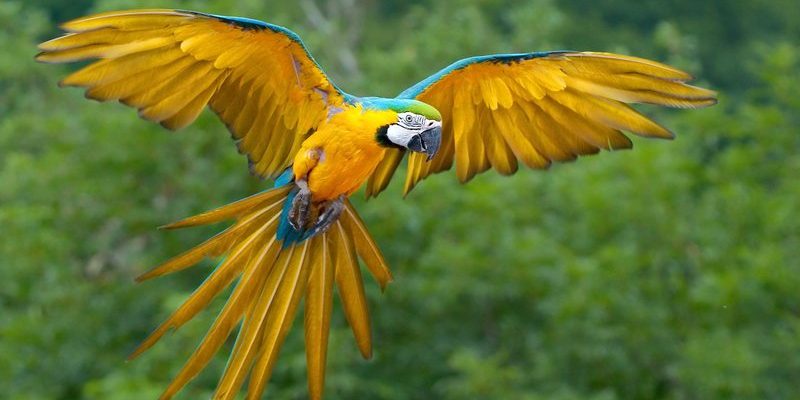
Imagine walking through a thick rainforest, the air rich with the sounds of nature. Suddenly, you hear the high-pitched squawk of a macaw—it’s hard not to feel joyful. But here’s the thing: the blue-and-yellow macaw is facing multiple challenges that threaten its existence. From deforestation to the illegal pet trade, these birds are in dire need of help. Let’s explore the various conservation efforts aimed at protecting the blue-and-yellow macaw and what we can do to support them.
Understanding the Blue-and-Yellow Macaw
The blue-and-yellow macaw, or Ara ararauna, is native to South America, particularly found in countries like Brazil, Bolivia, and Paraguay. These birds are known for their striking blue wings and beautiful yellow underparts. If you’ve ever seen one in a zoo or on a nature documentary, you might recall their friendly chatter and impressive intelligence.
These macaws are social creatures, often seen flying in pairs or small flocks. They require large territories filled with trees and abundant food sources, primarily seeds and nuts. Sadly, their natural habitat is shrinking due to logging and agriculture. As a result, their populations have declined significantly, making conservation efforts even more crucial.
Threats to the Blue-and-Yellow Macaw
You might be wondering, what exactly is putting these majestic birds at risk? Habitat destruction is one of the biggest culprits. As forests are cleared for farming or logging, the macaw loses its home and food supply. This loss leads to fewer nesting sites and struggles for survival.
Another major threat is the illegal pet trade. Many people are captivated by the beauty of macaws and wish to keep them as pets. Unfortunately, this often involves capturing them from the wild, which not only reduces their populations but also disrupts their social structures. The stress of being in captivity can have dire consequences for these intelligent birds.
Finally, climate change is making things worse. Changes in weather patterns can affect food availability, and rising temperatures can make habitats less hospitable. All of these factors contribute to the blue-and-yellow macaw’s vulnerability.
Conservation Organizations Making a Difference
Fortunately, there are many organizations dedicated to protecting the blue-and-yellow macaw and its habitat. Groups like the World Wildlife Fund (WWF) and BirdLife International are at the forefront of these efforts. They focus on several key areas, including habitat preservation, research, and public awareness.
These organizations often work hand-in-hand with local communities to promote sustainable practices. For example, through education and resources, they help local farmers understand the importance of preserving forested areas. By creating protected areas, they can ensure that macaws have safe habitats where they can thrive.
You might be surprised at how even small actions can have a big impact. For instance, supporting eco-friendly tourism in areas where these birds live can provide funds for conservation while benefiting local economies.
Community Involvement and Education
Community involvement is vital when it comes to conservation. Educating local populations about the importance of the blue-and-yellow macaw can lead to better protective measures and foster a sense of stewardship for their environment. Programs that include children can be especially effective, as they nurture a love for wildlife from an early age.
Some organizations host workshops and community events where locals can learn about sustainable practices, such as agroforestry. These methods allow people to earn a living while conserving the rich ecosystems that macaws and other wildlife depend on.
Additionally, awareness campaigns can help change the perception of macaws. Rather than seeing them as potential pets, communities can learn to appreciate them as a vital part of their natural heritage.
Rehabilitation and Release Programs
Rehabilitation and release programs play a crucial role in conserving the blue-and-yellow macaw. Many of these birds are rescued from illegal trade or are orphaned due to habitat destruction. After receiving care, socialization, and training, they are often released back into their natural environments.
These programs focus on various aspects, such as building nesting boxes in protected areas to encourage breeding. Providing a safe space for these birds to thrive is essential for their population recovery. For instance, in countries like Brazil, several organizations are actively working to create safe zones where macaws can nest and raise young ones.
Watching a rehabilitated macaw take to the skies again is truly inspiring. It’s a reminder that with the right efforts, we can restore hope to vulnerable species.
How You Can Help Protect Blue-and-Yellow Macaws
You might be wondering what you can do to get involved. Thankfully, there are plenty of ways to help protect blue-and-yellow macaws, even from afar. Here are some practical steps you can take:
- Support conservation organizations: Donating or volunteering with wildlife organizations can make a significant impact.
- Spread awareness: Talk to friends and family about the importance of protecting these amazing birds and their habitats.
- Choose sustainable products: Opt for products that promote deforestation-free practices. This helps protect the forests where macaws live.
- Report illegal activities: If you see someone selling macaws or other wildlife, report it to the authorities.
Even small actions can create a ripple effect, encouraging others to step up and join the cause.
The Importance of Biodiversity
Why should we care about the blue-and-yellow macaw, aside from their beauty? They are a vital part of their ecosystem. As seed dispersers, they help maintain plant diversity in their habitats. If macaws disappear, the plants they help grow could also decline, which impacts other wildlife.
Biodiversity is crucial for a healthy planet. It supports ecosystem functions, contributes to climate stability, and provides us with resources like clean air and water. Protecting one species like the blue-and-yellow macaw is a step toward safeguarding our planet’s rich tapestry of life.
In conclusion, efforts to protect the blue-and-yellow macaw are not just about preserving a beautiful bird; they’re about maintaining the balance of our ecosystems and upholding our responsibility to the environment. With collective action from communities, organizations, and individuals, we can ensure future generations will have the chance to hear the joyful squawks of these colorful parrots. Let’s work together to make a positive impact!

